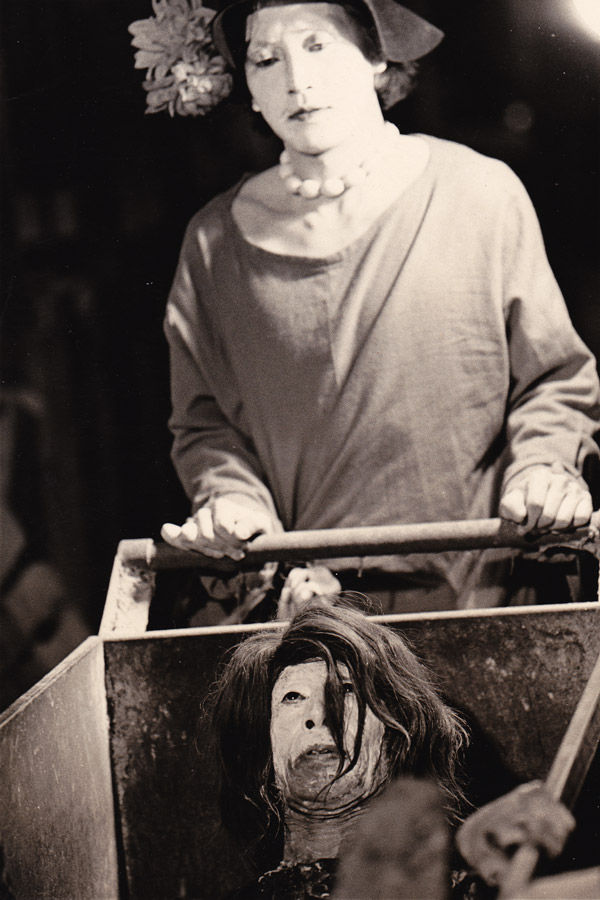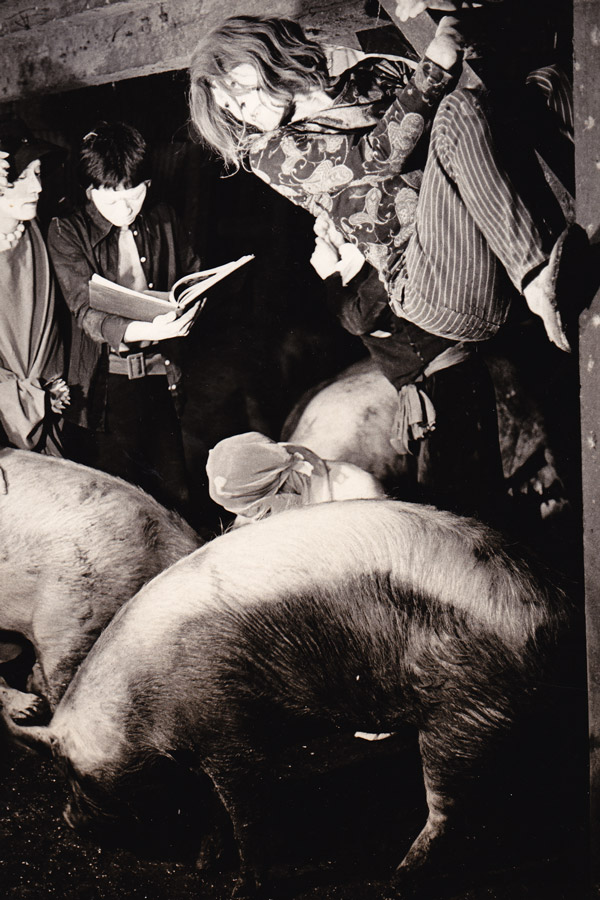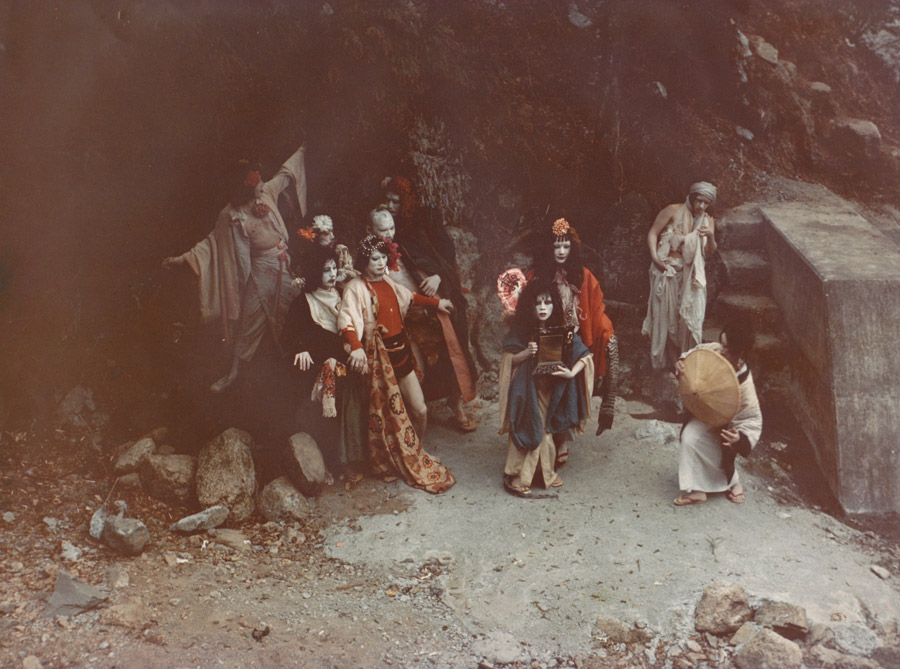Mr O’s Book of the Dead it’s the last movie in the experimental Butoh dance film trilogy that happened when celebrated dancer Kazuo Ohno and director Chiaki Nagano joined forces. It feels like the time these two spent together during the previous film has helped them mature as artists, since this is the most realized and conceptual film in the trilogy. Mr O’s Book of the Dead, unlike some of the other films in the trilogy, features several dancers, adding to the experience and making it feel more grandiose. This is also as accessible as Butoh gets, making it a great starting point for people wanting to get into the dance style.
The film is basically an exploration of four major themes told through the language of Butoh dancing: Religion, Japanese identity, Sexuality, and Nature. Chiaki Nagano made sure to fully convey these topics in a way that makes it obvious what it is they’re talking about, but the exact stance the film takes on them is still open to interpretation. He does this visually with makeup and set design, leaving the dancers to do the talking in a work that feels accomplished. The complementing music, which can range from eerie instrumentation to soothing jazz compositions, should not be neglected either, as it can make the overall presentation much more enjoyable.
Religion
Mr O’s Book of the Dead has a very clear stance on religion since there are a lot of images shot around what appear to be abandoned temples. Not only that but there are instances where the dancers seem to be glorifying an object or another dancer in what feels like a total deconstruction of religious ceremonies.
The visual language of Butoh and how it handles the topic of Religion implies a number of things; it could be a call to see religion in a fresh light, or it may be an outright rejection of religion as portrayed through the harsh lens of Butoh dance. Kazuo Ohno takes centre stage as he is frequently praised or is at the heart of what appear to be rituals. Depending on the situation, his presence may be overwhelming or overwhelmed, creating a fascinating dynamic that allows spectators to make heads or tails of it.
The rest of the dancers should not be overlooked as they add a lot to the experience. Some if not most of them are much more expressive than Kazuo, with movements that feel more animalistic and raw, which in this particular theme could mean many things such as possession or even religious fanaticism.


Japanese Identity

Chiaki and the design team in the movie deliberately chose to have most of the characters dress in what appears to be traditional Japanese clothing. The dancers wear very exquisite costumes that contrast sharply with the setting, as do their frenetic and improvisational moves. Based on the historical roots of Butoh, this most likely is a visual representation of not feeling at home in your own country.
This interpretation is supported by some scenes where Kazuo is shown in a very expressive way wearing a spandex red suit. This might imply that he has found peace in wearing what he wants rather than trying to force himself to be something else.
Sexuality is one of the most prominent themes in the movie. One of the first scenes is a man throwing a rock out of his underpants into the sky and then feeling relieved that he no longer has a rock to carry inside. And just like the previous example, there are a lot of instances where Kazuo and Chiaki show sexuality as liberation. The case of homosexuality could be made as well, but I think is not clearly represented, especially compared to more contemporary Butoh which has essentially adopted homosexuality.
This is an aspect of the movie which benefited greatly from having a giant crew of dancers in the cast. Previous works such as Portrait of Mr O claim to be tackling sexuality, but its depiction of it fell hopelessly short with just Kazuo interacting with himself. But adding more people helps to bring the topic to focus, with the actual sexual tension between dancers and so on.
Like in many forms of media, sexuality is portrayed as a return to our most basic instinct. With some scenes that are bound to shock some viewers, but then again, that’s the intention.


Nature

The theme of nature is one that is overwhelmingly present. The movie was shot in a lakeside forest, with many of the dancers dancing in open environments. Again this is something that previous movies in the trilogy attempted, with open fields and farms being the main focus, but they just can’t compare to the scale present in Mr O’s Book of the Dead.
The movie wants to present a contrast between nature and a closed-door environment. Dancers that are filmed in natural open environments dance in a more erratic and outlandish way, while dancers filmed inside tend to move slowly.
The expression on the dancers’ faces does seem to convey that nature is way more fun than closed doors, but it’s sort of a terrifying portrait of fun that I don’t think many people would like to take part in. Once again, what you make of it is all up to you.
Conclusion

Mr O’s Book of the Dead is a movie that wants to say a lot of things and has found a language that it feels comfortable using to express its themes. The language itself is raw and unfiltered but if that is something that appeals to you or interests you this is a good way to start. Like many works of avant-garde media, this movie is more theoretical than practical, but if what you’re looking for is learning more about Butoh, this is where to start.










































